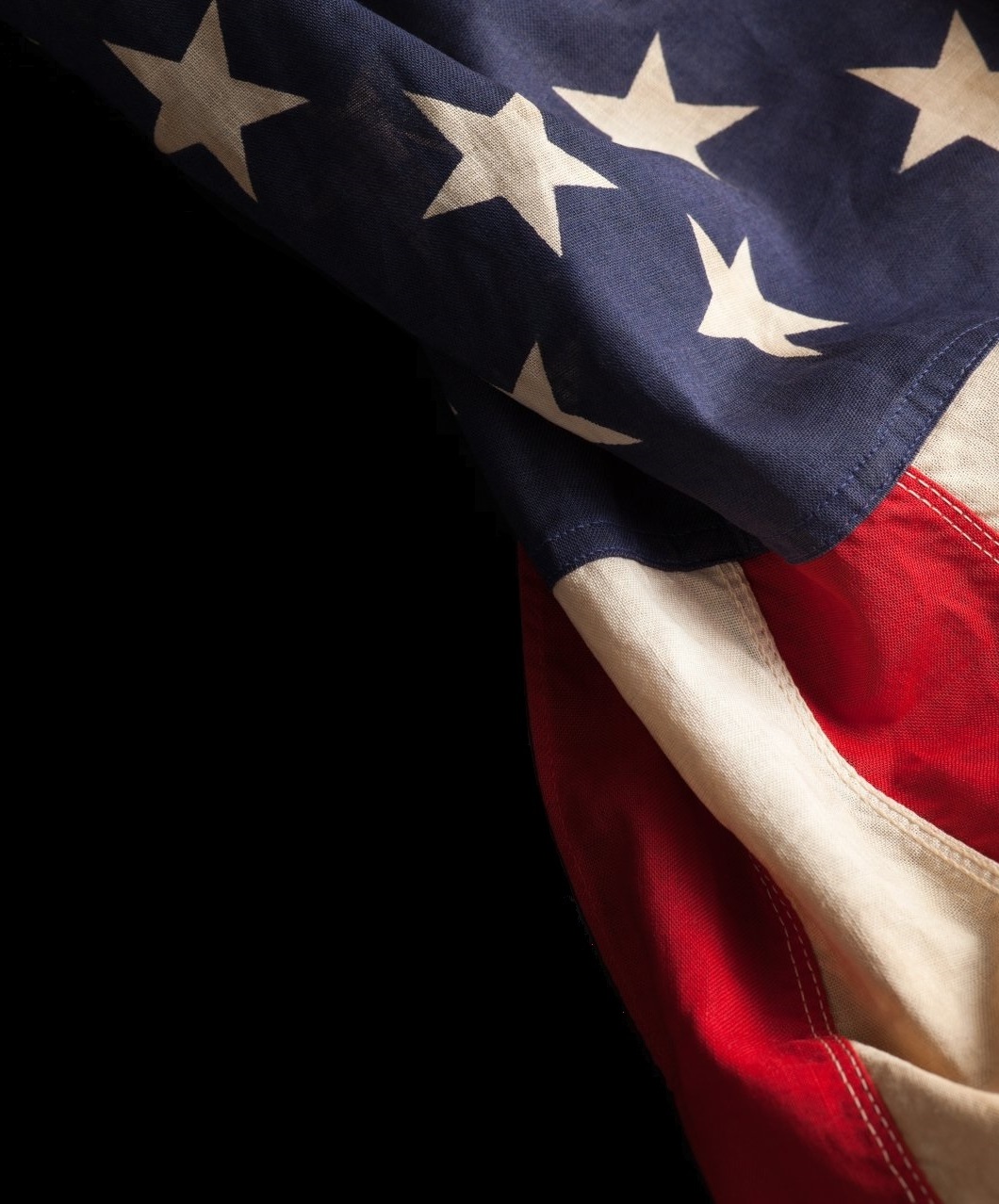
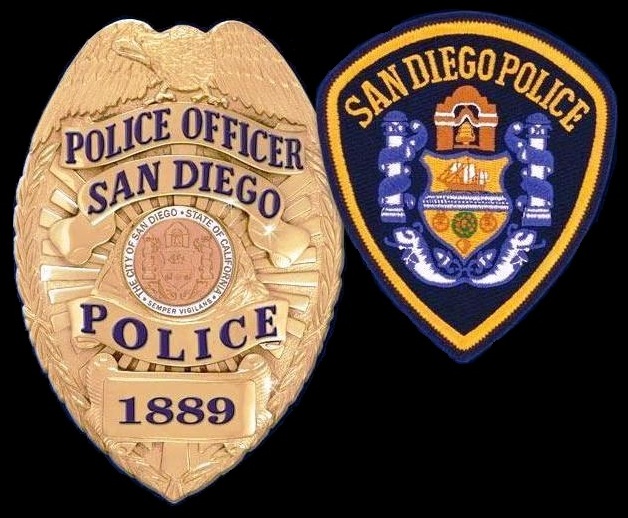

The following contains a timeline of SDPD Officer’s and Chief's who made coming out from behind the badge possible. These officers also directly contributed to the improvement of relations between the San Diego Police Department and the LGBT community we serve.
JULY 1977: Sgt. Larry LaMond, a 10-year veteran, became the first known SDPD Officer to come out as gay. He resigned shortly afterward.
June 1979: Assistant Chief Robert Burgreen announced the SDPD would hire a qualified gay man or lesbian. Burgreen stated, “no person in the SDPD should be subjected to discrimination,” Burgreen said he and Kolender implemented the new policy after the resignation of Larry Lamond, who both Burgreen and Kolender believed was a good and satisfactory officer.
January 1982: Chief Kolender stated to an LGBT group in San Diego, "I will take disciplinary actions if I find officer’s harassing gay people and that I’ve demoted and fired officers for this behavior."
February 1983: Chief Kolender announced the SDPD had removed the question on homosexuality from the polygraph exam.
March 1984: Chief Kolender named a heterosexual person, Lt. Dave Spisak, as his official liaison officer to
the LGBT community. At that time few, if any, police agencies in the US had such a position. Lt. Spisak worked with LGBT Community member, Susan Jester, who ran the Police Relations Committee. Other members of the Commission included Nicole Murray - Ramirez, Fred Scholl and Tom Homann.
January 1985: Nicole Murray Ramirez and Susan Jester raised over $2,000 for the fallen officers memorial to be constructed at the new SDPD Headquarters scheduled to open in January 1987.
May 1985: Lt. Spisak was transfered to the Traffic Division and replaced by a heterosexual person, Lt. Charles Ellis. Many in the LGBT community commended Spisak for his response against fundamentalist protestors at Lambda Pride in June 1984 and for the arrest and conviction of a man posing as an undercover officer in order to extort money from Gay men in March 1985.
February 1987: SDPD revised its academy curriculum to include a two-hour course on San Diego’s LGBT Community and included Gay and Lesbian awareness training. Jeri Dilno, former Executive Director of the Lesbian and Gay Man’s Community Center and Fred Scholl, worked with Sergeant Joe Markwell and Detective Rob Hurt to design the course.
August 1987: In an interview with Bravo! Chief Kolender stated that while he didn't know of any openly Gay officers, he assumed there were a few. Kolender added an officer’s sexual orientation was, “none of the department’s business as long as they did a competent job.”
July 1988: After Chief Kolender announced his retirement, Fred Scholl spoke to a Lesbian and Gay political club to discuss possible candidates for his replacement. Of the five possible candidates, the LGBT community largely favored Assistant Chief Burgreen. Scholl stated Burgreen “from his gut, his orientation is that everyone should be treated equally.” Burgreen also received praise from Jeri Dilno, his colleague from the Police Advisory Board. Dilno told Bravo! Newsmagazine that Burgreen was “easy to work with” and was receptive to the needs of the LGBT community.
July 1988: Lieutenant Ellis was replaced by heterosexual Officer Jim Arthur as the LGBT Community Liaison.
November 1988: In a Bravo! interview, Chief Burgreen stated SDPD no longer asked about sexual orientation and he knew of Gay and Lesbian people working in the police department that were, “doing an effective job.” When asked what he would do about a Gay officer being harassed by colleagues, Burgreen replied: “I'd go to bat for him, that’s what I’d do, and I’d do the best I could to keep that harassment from taking place.” Burgreen also encouraged Gays and Lesbians who believe they would be good officers to apply.
March 1989: SDPD Community Relations rented a booth at the Hillcrest Street Fair. It was the SDPD's first attempt to recruit Lesbian and Gay officers.
March 1989: Chief Burgreen issued a Non-Bias Policy. In a meeting with the Lesbian and Gay Liaison Committee, Burgreen stated that despite some internal pressure, he was adamant there would be no discrimination against Lesbian or Gay officers or harassment of Gay and Lesbian individuals or establishments.
June 1989: SDPD opened their first booth at the San Diego Gay & Lesbian Pride Festival. The booth was staffed by Update writer and Chair of the Gay and Lesbian Liaison Committee Fred Scholl as well as Officer Jim Arthur and Community Relations Officer Jim McGee.
October 1989: Officer Jim Arthur was promoted to detective and replaced by heterosexual Officer Peter Gaughen, who had spent most of his career in the North Park/Hillcrest area. The LGBT community offered congratulations to Detective Arthur and stated that he would be missed.
April 1990: Burgreen appointed heterosexual Officer Matthew Weathersby as the liaison officer to the Lesbian and Gay community.
May 1990: Officer Weathersby addressed the community during the annual Stonewall Awards, a notable first for the SDPD. Weathersby stated relations had improved drastically however, there was room for improvement. Weathersby added Chief Burgreen appointed four liaison officers for San Diego’s minority communities so each community had their specific needs met. Weathersby encouraged the community report any encounters where officers acted inappropriately or unprofessionally."
October 1990: Officer John Graham held an unofficial press conference at The LGBT Center where he came out. Graham came out so young gays and lesbians could see that they were represented in the SDPD and prove that Gay men and lesbians could be great officers. Within months a 2nd SDPD Officer, Rick Edgil, came out.
July 1991: John Graham was named San Diego Pride’s Man of the Year and marched in the parade. That same year, the LAPD banned officers from wearing uniforms during LA Pride. Graham had obtained permission from Chief Burgreen to wear his uniform and walked next to the Man and Woman of the Year float. Officers Graham and Edgil, as well as El Cajon Police Officer Chuck Moreno and fired FBI Agent Frank Buttino also participated.
June 1992: The Boy Scouts of America demanded the removal of El Cajon Police Officer Chuck Moreno from ECPD’s Police Explorer program because he was gay. As a public statement, Chief Burgreen ended the department’s current charter with the Boy Scouts of America.
1997: San Diego Municipal Code ordinance 56.19, making it a crime to cross-dress, was repealed.
1998: Officer Weathersby was replaced by openly lesbian Sergeant Natalie Stone as the LGBT Community Liaison Officer.
2001: Sgt. Stone was replaced by openly gay Officer Mark Dalezotte as the LGBT Community Liasion Officer.
2004: Officer Mark Dalezotte was replaced by openly lesbian Lt. Margy Scaufelberger as LGBT Community Liaision.
2008: Lt. Margie Scaufelberger was replaced by openly lesbian Lt. Caroline Kendrick as LGBT Community Liaision.
2011: Lt. Kendrick was replaced by openly gay Officer Daniel Meyer as LGBT Community Liaison.
October 2014: Sgt.Meyer, while under the direction of Chief Shelly Zimmerman, published the San Diego Police Department’s Training Bulletin, “Police Interaction with Transgender Individuals.”
June 2015: 31-year-old Officer Christine Garcia came out as the department’s first Transgender Officer. The 8 year veteran was assigned to Traffic’s Collision Investigation Bureau.
May 2017: The 9th annual Harvey Milk Diversity Breakfast honored Officer Garcia and Lt. Meyer for their work in bridging gaps between the police department and the LGBT community.
June 2020: Lt. Meyer was replaced by Officer Garcia as the LGBTQ Community Liaison Officer. His resignation letter was published in several media outlets.
2023: In June, KPBS profiled Officer Lisa Hartman in a story entitled, "Leading with PRIDE: San Diego police officer changing hearts and saving minds, one recruit at a time."
The fallen officers memorial at SDPD HQ was partially funded by the LGTBQ community in the mid 1980's.
31-year-old John Graham was a 10 year veteran when he came out in October 1990. Chief Bob Burgreen was supportive and encouraged Graham to create a support group for other
Gay and Lesbian officers.
The coming out sparked a dialogue within SDPD about the need to come out. Graham later created the support group "Society of Law Officers" (SOLO) for other gay and lesbian police officers.
Within months of Graham coming out, Officer Rick Edgil became the 2nd openly gay SDPD officer to serve.
By July 1992, approximately 9 law enforcement officers from around the county had come out as LGBT. Their march in the San Diego Gay Pride Parade, raised awareness of LGBT officers within law enforcement. This began to change the culture of law enforcement. Photo courtesy of Natalie Stone.
Sergeant Natalie Stone was SDPD's first openly lesbian LGBT Community
Liaison Officer.
In almost 10 years as Liaison, Dan Meyer worked with the LGBT Community Center, San Diego Pride organization and other groups and businesses to improve community relations. He was promoted twice, partially because of his work with communities and victims. Lt. Meyer created SDPD training along with the LGBT Center, helped create policy/procedures in cultural awareness and respect and he streamlined the reporting process through the use of the 24/7 on call Liaison program.
Officer Christine Garcia transitioned from male to female and was accepted by her peers. She became the SDPD's first Transgender Community Liaison Officer in November 2015. She assisted the SDPD in developing training for Transgender Diversity at the Academy, wrote Policy and Procedure to ensure fair treatment of Transgender Individuals and spoke at the LGBT Center to help address mistrust issues between the transgender
communities and SDPD.
In July of 2016, Officer Garcia walked in the San Diego Pride Parade making her the first officer to hold a Transgender Pride Flag while in uniform at an event.

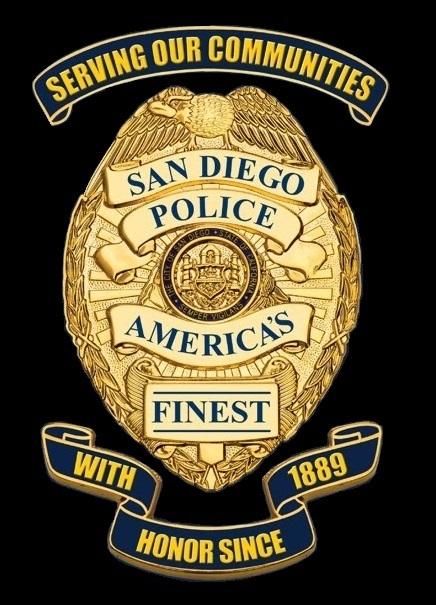
1990's. Mike Wallace of the CBS 60 Minutes, visited Officer's Edgil, Graham, Patrick Cooley and Natalie Stone at SDPDHQ. The episode about LGTBQ officer's aired however the final version left out the SDPD.
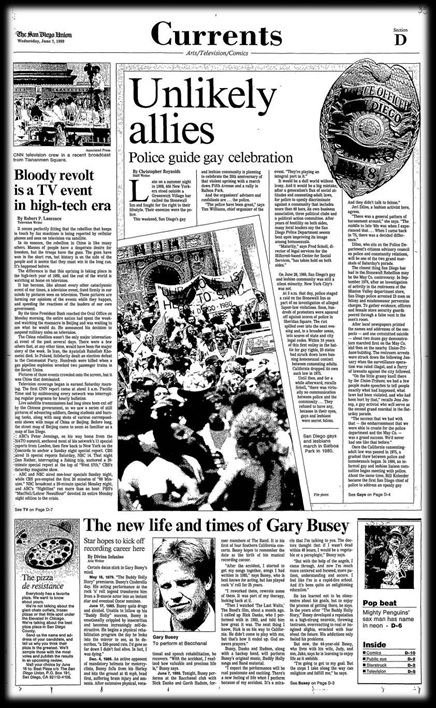
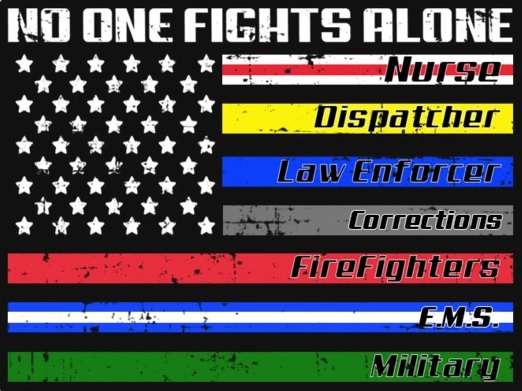
San Diego law enforcement agencies first allowed their officers to march in the Pride Parade in uniform in 1992. In a show of support, Chief Bob Burgreen walked at the head of the SDPD contingent.
Photo courtesy of Natalie Stone
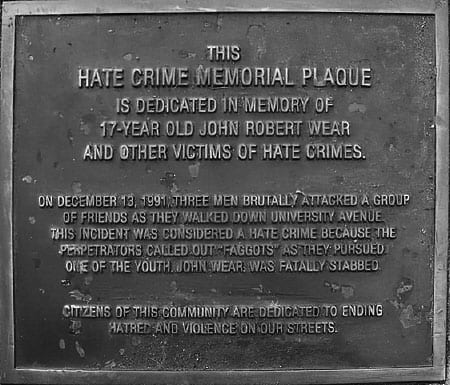
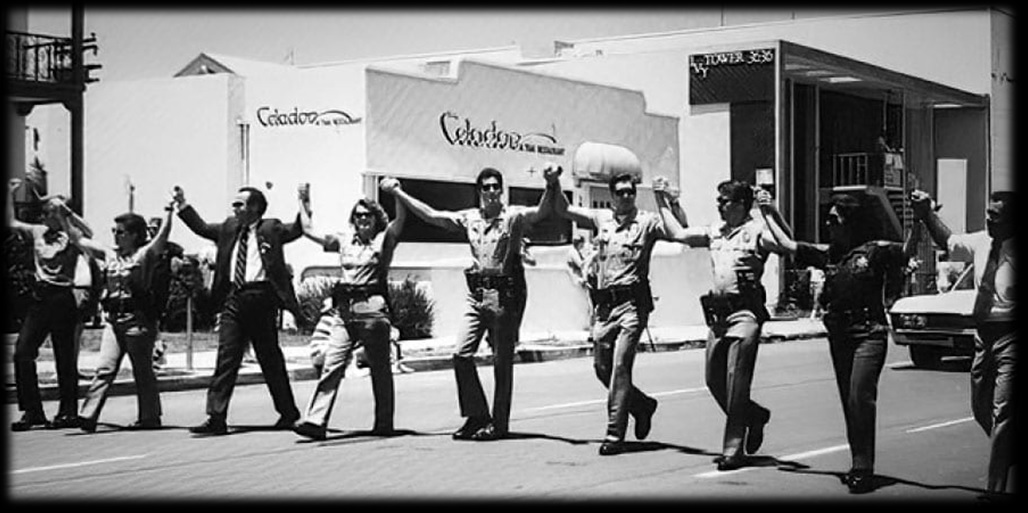
On December 13, 1991, 17-year-old John Wear was with a group of friends when he became the victim of a hate-motivated attack. Wear died two days later.
In response, the LGBT community and Hillcrest leaders rallied to speak out against a rash of attacks that had been reported in the area over the past year.
Community members organized a candelight march, met with police, and put together a volunteer citizens patrol with the assistance of then-City Councilmember John Hartley.
A few months later, a Hate Crime Memorial plaque was
placed on the sidewalk in front of Obelisk bookstore to remember the incident.
Meanwhile, SDPD formed a task force to investigate the attacks. The investigation led them to arrest Eddie Barton, a North Park carpenter. Barton was sentenced to 21 years to life in prison on June 27, 1996.
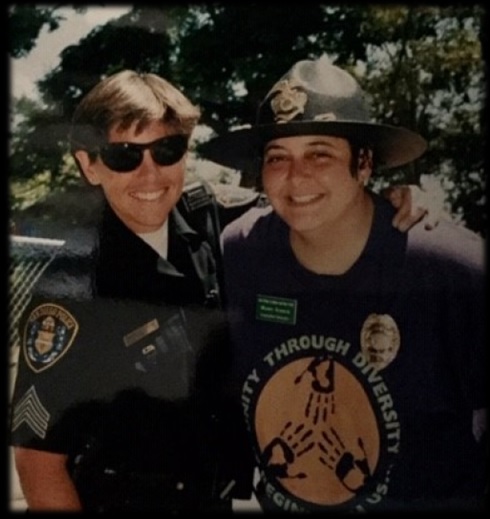
Natalie Stone, with Mandy Schultz, then-executive director of San Diego Pride. Photo courtesy of Natalie Stone
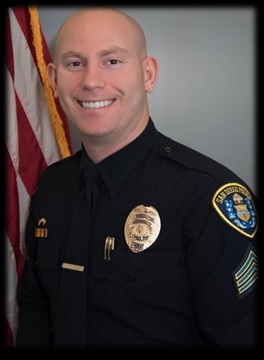
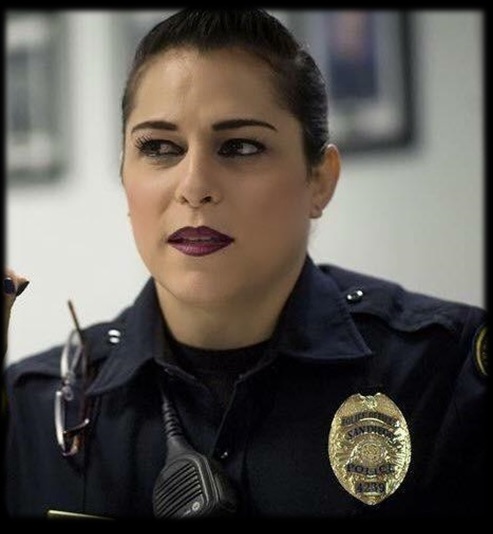
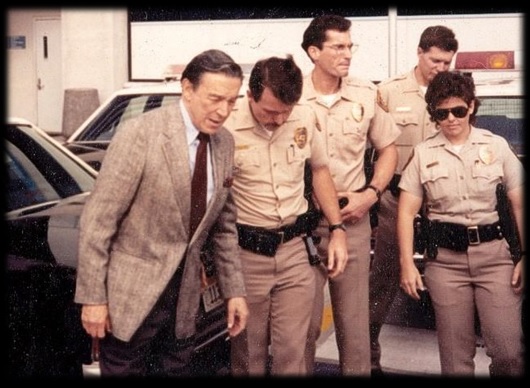
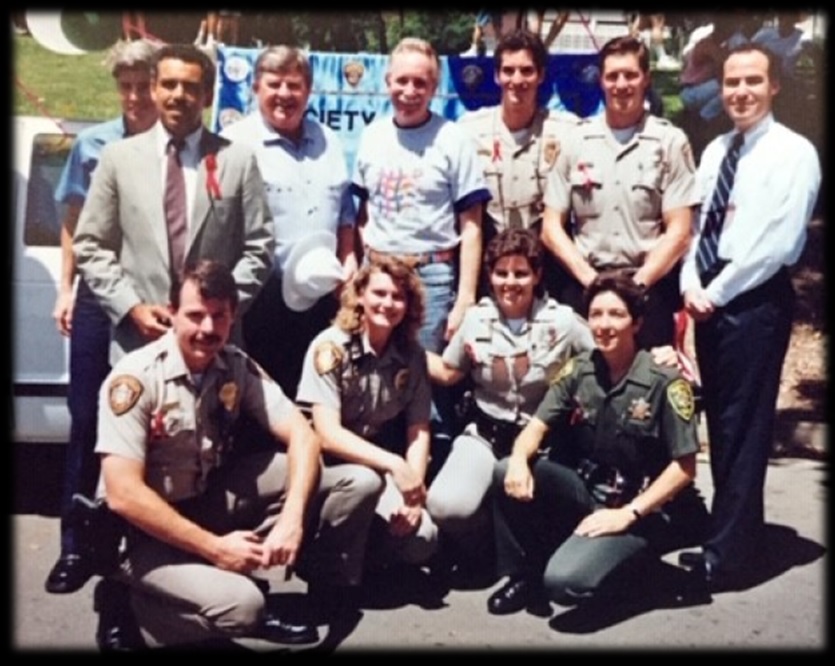
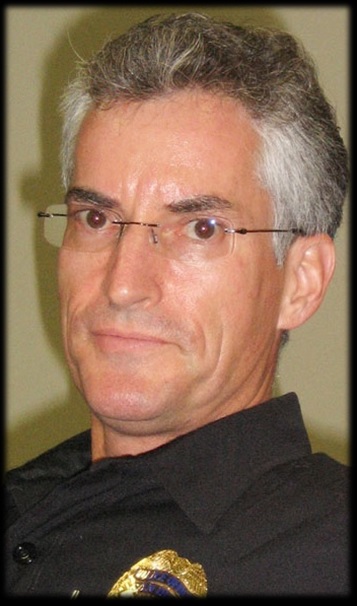
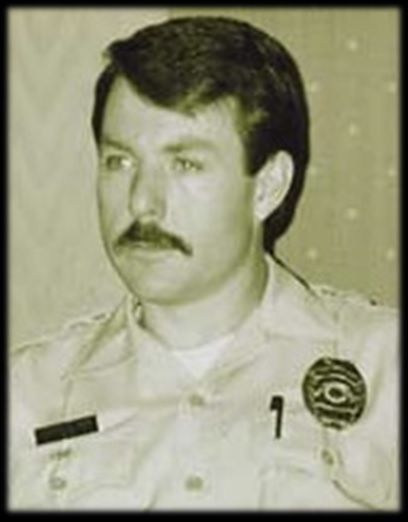
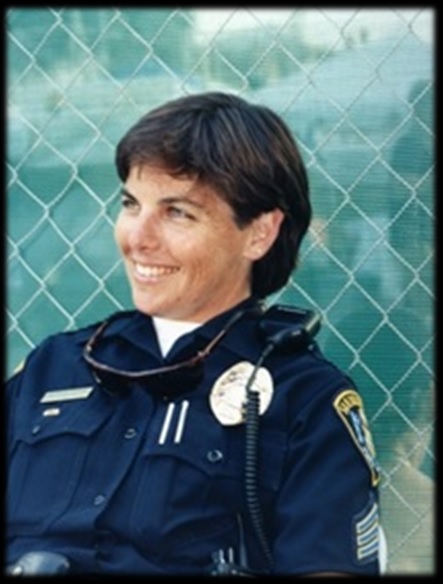
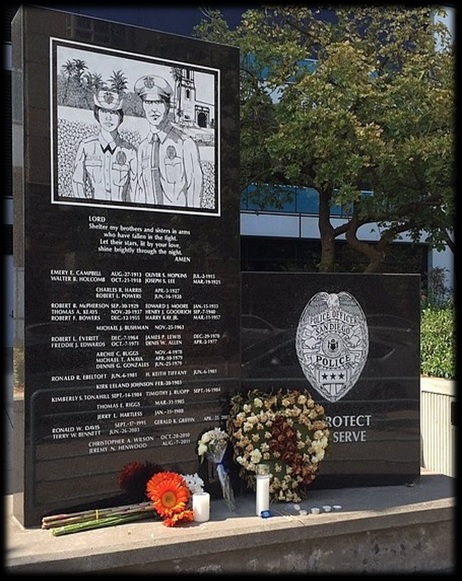
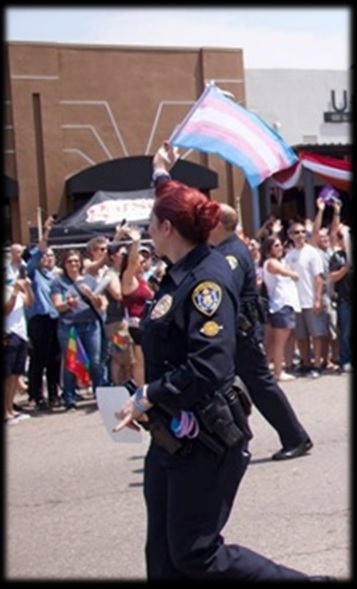
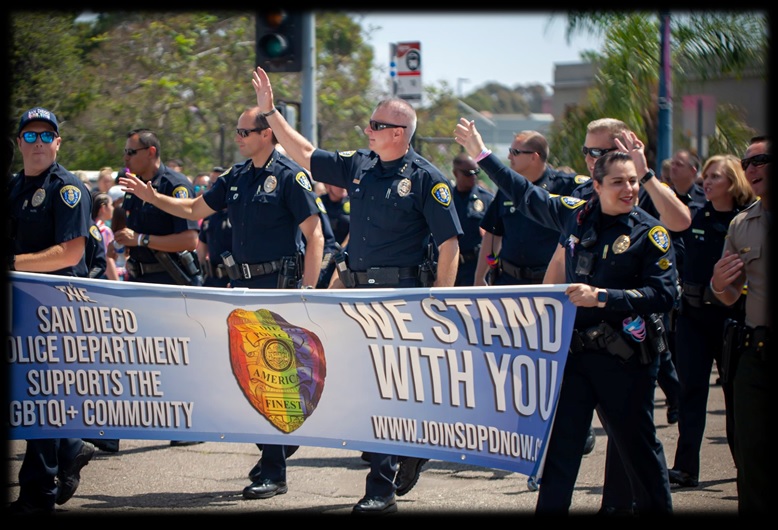
SInce 1992, scores of department members, including each Chief of Police since Burgreen, have marched in the annual pride parade in support of LGTBQ members of the SDPD as well as the for the community.